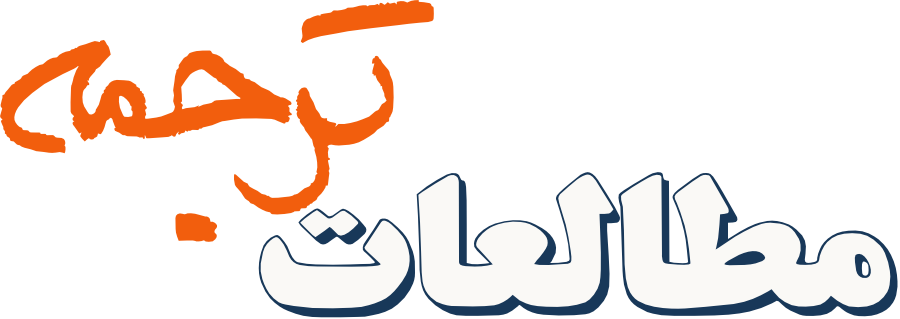مطالعه تطبیقی شیوههای ترجمه در دو نسخه دوبله از پویانمایی غارنشینان (2)
چکیده
هدف پژوهش حاضر بررسی راهبردهای مورد استفاده در ترجمه دو نسخه دوبله پویانمایی غارنشینان 2 توسط دو شرکت سورن و گلوری بر اساس نظریه گاتلیب (1992) بود. پژوهشگران بر آن بودند تا بررسی کنند کدام راهبردها در صدر فهرست راهبردهای ترجمه دو نسخه دوبله شده قرار دارند و از کدام راهبردها کمتر استفاده شده است. این پژوهش از نوع کیفی و روش تحقیق تحلیل محتوا بود. در ابتدا، پژوهشگران دریافتند که کدام یک از راهبردها در ترجمه مورد استفاده قرار گرفتهاند. در ادامه دوبله انگلیسی و فارسی را مقایسه، تقابل و تجزیه و تحلیل کردند و بر اساس دادههای بهدستآمده از این پژوهش متوجه شدند که راهبردهای پیشنهادی گاتلیب (1992) در ترجمه زیرنویس فارسی نسخههای دوبله منتخب مورد استفاده قرار گرفتهاند. انتقال، اولین راهبرد رایج توسط شرکت سورن و جابهجایی، اولین راهبرد رایج توسط شرکت گلوری بود. همچنین بسط و بازنویسی، راهبردهای متداول بعدی بودند. علاوه براین، بیشترین و کمترین راهبردهای اتخاذ شده توسط دوبلورها که ریشه در لحن طنزآمیز و وفاداری به زبان اصلی داشتند، مورد بحث قرار گرفتند.
واژههای راهنما: ترجمه شنیداری دیداری، دوبله، راهبردهای معادلیابی گاتلیب، شرکتهای سورن و گلوری
مراجع
Abdi, K. (2007). Translator's Strategies for Dealing with Taboo in Movies Dubbed from English into Persian. [Unpublished master's thesis]. Allameh Tabataba'i University, Tehran, Iran.
Anderman, G. & Rogers, M. (2005). In and out of English: For better, for worse. Imprint: Clevedon; Buffalo: Multilingual Matters.
Baker, M. (1991). In other words: A coursebook on translation. London: Routledge.
Baumgarten, N. (2005). The Secret Agent: Film Dubbing and the Influence of the English Language on German Communicative Preferences. Towards a Model for the Analysis of Language Use in Visual Media. [Ph.D. Thesis]. University of Hamburg.
Catford, J. C. (1965). A Linguistic Theory of Translation (Vol. 31). London: Oxford University Press.
Chaume, F. (2004). Discourse Markers in Audiovisual Translating. Meta: Translators‘ Journal, 49(4), 843–855.
Chiaro, D. (2009). Issues in Audiovisual Translation. In J. Munday (Ed.), The Routledge Companion to translation studies (pp. 141–65). London, England: Routledge.
Cintas, J. D. & Anderman, G. (2009). The Wealth and Scope of Audiovisual Translation. In J. Cintas, & G. Anderman (Eds.), Audiovisual translation: language transfer on-screen (PP. 1-16). Palgrave Macmillan.
Garbovsky, N. K. (2004). Theory of Translation. Moscow: MSU.
Ghomi, P. (2012). Dubbing Cartoons: Synchronization Fostering Humor. Iranian Journal of Translation Studies, 9(36).
Gottlieb, H. (1992). Subtitling: A New University Discipline. In C. Dollerup & A. Ladegaard (Eds.), Teaching translation and interpreting: Training, talent, and experience (pp. 161–170). Amsterdam, Philadelphia: John Benjamins.
House, J. (1977). A Model for Assessing Translation Quality. Meta: Journal des traducteurs Meta: Translators' Journal, 22(2), 103–109.
Jakobson, R. (1959). On Linguistic Aspects of Translation. On translation, 3, 30–39.
Latishev, L. K. (1988). Translation: Problems of Theory, Practice, and Teaching. Moscow: Education Press.
Luyken, G.-M., Herbest, T., Langham-Brown, J., Reid, H., & Spinhof, H. (1991). Overcoming linguistic barriers in television. Dubbing and subtitling for the European audience. The European Institute for the Media.
Mahmoodvand. V. (2010). The Norm Governing the Translation of the Clichés of the Emotion of Anger in Dubbed Movies in Iran. [Unpublished master's thesis]. Allameh Tabataba'i University, Tehran, Iran.
Marashi. H & Poursoltani. Kh. (2009). An Analysis of Farsi into English Subtitling Strategies Employed in Iranian Feature Films. Journal of Teaching English as a Foreign Language and Literature, Islamic Azad University, North Tehran Branch, 1 (1), 15–29.
Munday, J. (2009). The Routledge Companion to Translation Studies. Taylor & Francis Group.
Newmark, P. (1988.) A Textbook of Translation. New York: Prentice Hall.
Nida, E. A. (1964). Towards a Science of Translating. Leiden: EJ Brill.
Pakatchi, K. (2008). Foreignization and Domestication in the English Translation of Children Literature. [Unpublished master’s thesis]. Allameh Tabataba'i University, Tehran, Iran.
Rashidi, N. & Mavaddat. R. (2014). Strategies Used by Persian Translators in Translating Idiomatic Expressions from English into Persian: A Comparative Study Based on Gottlieb’s (1997) Model. International Journal of Language Learning and Applied Linguistics World (IJLLALW), Volume 6 (1), May 2014; 338–358.
Rezvani Sichani, B. (2019). Analysis of Translation Strategies Employed in Awards-Winning Subtitled Dramas. International Journal of Foreign Language Teaching & Research–Volume 7, Issue 25.
Sadeghi, A. (2009). Translation Equivalence in Scientific Text. Retrieved from: www.webworldarticles.com/e/a/title/Translation-Equivalence-in-Scientific-Text
Schroter, T. (2005). Shun the pun, rescue the rhyme? The dubbing and subtitling of language-play in film. The Linguist List. Retrieved from: http://linguistlist.org/issues/16/16-1570.html
Vinay, J. P. & Darbelnet, J. (1995). Comparative stylistics of French and English: a methodology for translation (Vol. 11). John Benjamins.
Downloads
چاپشده
ارجاع به مقاله
شماره
نوع مقاله
DOR
مجوز
حق نشر 2023 Ali Akbar Arjmand Rad, Sayyedeh Robab Mousavi Asl

این پروژه تحت مجوز بین المللی Creative Commons Attribution-NonCommercial 4.0 می باشد.
Copyright Licensee: Iranian Journal of Translation Studies. This article is an open access article distributed under the terms and conditions of the Creative Commons Attribution–NonCommercial 4.0 International (CC BY-NC 4.0 license).





